Mark Holmes—a.k.a. DJ MRK—holds court at the Mod Club Theatre. Photo by Trevor Roberts.
Article originally published November 16, 2012 by The Grid online (thegridto.com).
As the Mod Club Theatre turns 10, Then & Now explores the story of how a ‘60s-retro dance night came to spawn a world-class concert and DJ venue, transforming College Street in the process.
BY: DENISE BENSON
Club: Mod Club Theatre, 722 College
Years in operation: 2002-present
History: To share the history of how The Mod Club Theatre came to be, one must first trace College Street’s evolution as a nightlife destination. The stretch of College running west of Bathurst to Dovercourt has, of course, long been a hub for Italian, Portuguese and Latino communities. Restaurants and cafés have dotted the strip for decades—with Café Diplomatico at College and Clinton serving as a landmark spot for over 40 years—but it wasn’t until the 1990s that people began to open a broader array of venues that would entertain into the wee hours.
El Convento Rico—originally a haven for Latin gays, lesbians and transgendered people—opened in 1992, bringing dancing and drag shows to College and Crawford. The early-to-mid ’90s also saw the opening of spots including Souz Dal, College Street Bar, Ted’s Collision, and Alex Lifeson’s live music venue The Orbit Room. Intimate café 52 Inc. fed, entertained and politicized on the other side of Bathurst from 1995-2000, while Bar Italia opened on College in 1996 and Ted Footman launched Ted’s Wrecking Yard and Barcode—two floors of live music in one building—in 1997.
Musician Dan Kurtz—formerly of The New Deal and currently of Dragonette—knows the area well.
“When I moved to Canada as a little kid, I lived at College and Bathurst, and spent most of my childhood in the neighborhood,” he says. “As an adult, I bought a house on Beatrice and renovated it, just a year or two before things really began to heat up on the strip. I did that a couple more times with houses in the neighborhood before I moved out and, during that time, College Street became the hottest place to hang out. It was a great mix of a really authentic, old-school and virtually unchanged Italian and Portuguese neighbourhood by day, and an increasingly broad mix of great and cheesy bars and restaurants at night.
“My friends, my band, and most of my family lived in the neighborhood at that time, and it was probably one of the best times of my life,” he adds. In the late ’90s, Kurtz performed at venues like Ted’s, Bar Italia, and Orbit Room while a member of bands including Que Vida.
“At the time, almost every show I played was memorable, since my bands were just coming up,” says Kurtz. “Getting a good gig on College was some measure of legitimacy.”
Lava Lounge, at 507 College just west of Palmerston, added much to the strip. Opened in September 1997 by former Rivoli staffers Greg Bottrell and Rob Eklove (with support from The Rivoli and Queen Mother Café owners Andre Rosenbaum and David Stearn), Lava Lounge was located in the former home of Portuguese family restaurant Cheers. Bottrell and crew transformed it into a resto-lounge, club, and patio licensed for 270 people, making Lava one of the largest spots on College at that time.
“College seemed like a cool up-and-coming area,” recalls Bottrell. “But when we first opened, there was not that much happening on the street. It hadn’t blossomed yet.”
Their timing was good, as the area soon exploded. Hip new spots dotted the landscape, with venues ranging from the super cool (Ciao Edie) to student-centric (Midtown) to pool halls (Clear Spot, later Andy Poolhall), all featuring DJs.
“The late 1990s to 2005 was College Street’s heyday,” says Bottrell, who also opened Asian fusion restaurant Tempo at College and Clinton in 2000. “It was the hip and happening restaurant, patio, and bar area in those years—along with a few clubs, Lava Lounge being one of them.”
Lava featured both live music and DJs from its start. Resident DJs included the likes of Fish Fry, Mike Tull and Tony Lanz, Shawn MacDonald, and John Kong, while Tuesdays were known for the live soul-jazz of Thomas Reynolds and Shugga, often accompanied by vocalist Divine Earth Essence (now Divine Brown).
In October of 1999, a new Wednesday weekly dubbed Mod Club launched at Lava Lounge. Helmed by friends and British expats Mark Holmes (also known as the vocalist in Platinum Blonde) and Bobbi Guy, the Mod Club nights were inspired by shared obsessions and, partly, the success of Davy Love’s Blow Up Saturdays, then held at The El Mocambo.
“I went to the U.K. with my friend Bobbi in 1999 and, on our way back to Toronto, we hatched this plan for something totally different than Blow Up,” says Holmes, at the beginning of a lengthy phone interview.
“So many bands, like Blur and Oasis, were talking about the influence of all these ’60s bands, and I thought that if people were interested in those bands, they might be interested in where the music came from. I was an absolute 1960s fanatic; I had VHS tapes of The Prisoner, The Avengers, The Saint, and I was crazy about the music, the clothing, everything. I just wished so heavily that I could transport myself back into that time.”
They did the next best thing. Guy designed the Mod Club logo, the pair promoted around town, and soon they were projecting 1960s British imagery while spinning deep collections of Motown, soul, R&B and mod bands in the similarly styled Lava Lounge.
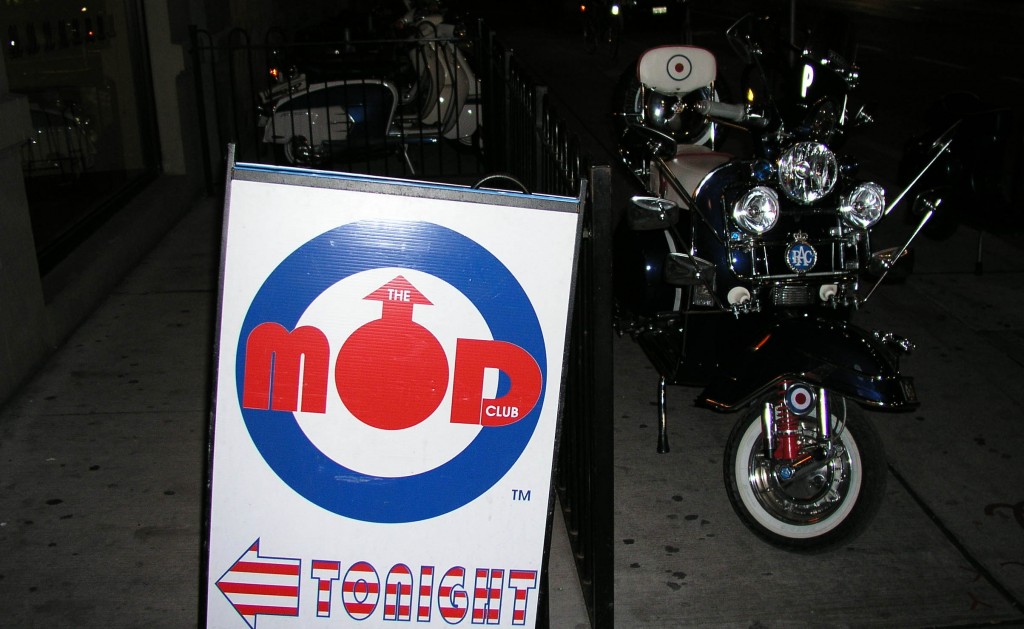
The original Mod Club sign, outside Lava Lounge. Photo courtesy of Mark Holmes.
“Basically, you were in a time capsule the moment you walked in,” says Holmes. “I loved every last magical minute of it.
“Everybody came out dressed like the ’60s; all the guys had suits, all the girls had Vidal Sassoon haircuts. And then it just exploded. After a few Wednesdays, the lineup was down the street. I got my wish: every Wednesday, I got to go back into the ’60s.”
“That night was just a great scene,” agrees Bottrell. “People looked the part. They had scooters, Fred Perry, Ben Sherman. It was a good-looking, young, and—because it was mid-week—downtown crowd. The music with Mark and Bobbi was wicked. People danced their asses off.”
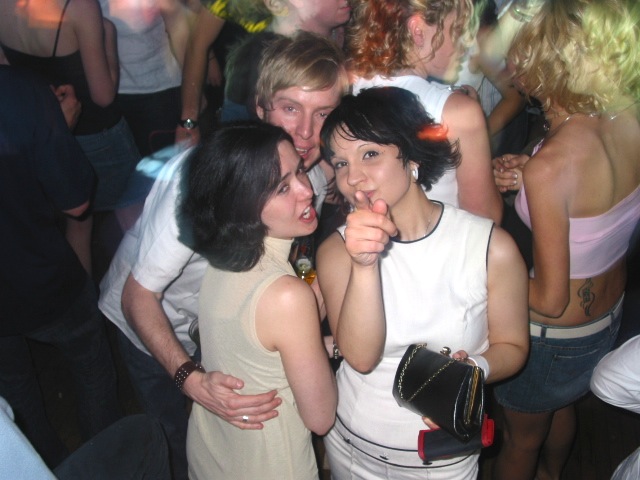
The scene inside Mod Club Wednesdays at Lava Lounge. Photo courtesy of Mark Holmes.
Mod Club packed Lava every Wednesday until the club was forced to close in spring of 2004. The building it was in would be torn down to make way for the huge href=”http://condos.ca/condominiums/toronto-the-europa-308-palmerston-ave” target=”_blank”>Europa condo building of today.
“We’d signed a regular corporation lease, which had a ‘demolition clause’ in it,” Bottrell explains. “Back then, no one would have predicted that such a condo boom was on the horizon. Also, no one would have guessed that people would demolish a more than one-hundred-year-old building that took up most of a city block to build a bigger and brand new condo.”
By fall of 2004, Bottrell opened Supermarket in Kensington Market. Guy and Holmes continued there for many months of soul-soaked Mod Club Wednesdays.
“I remember one night at Supermarket, Ryan Gosling and Rachel McAdams were in and requested some slow music,” begins Guy. “We obliged, and the whole bar looked on as they re-enacted The Notebook on the dancefloor. We played about six slow songs while they just made out, without a care in the world. Another night there, a guy came into the booth with a weird accent and complimented me on my Hammond groove set, then looked through my CDs. I gave him some tickets to go get us drinks, and watched as he lined up for 10 minutes at the bar. He returned, and then introduced himself as Tiesto. Nice bloke.”
But the Mod Club story also takes us back to College Street, and mirrors its growth. In November 2001, while still holding down Wednesdays at Lava, Guy and Holmes also launched a Saturday Mod Club weekly at newly opened Revival Bar.
Opened by Domenic Tedesco and chef-turned-restaurateur Joe Saturnino, Revival is housed in a beautiful building at the corner of College and Shaw that was once a Baptist church, and later a Polish legion hall. Having been a partner in Italian fine-dining restaurant Veni, Vidi, Vici, which also attracted a later night crowd, Saturnino saw the writing on the wall.
“College Street had always been vibrant,” he says. “But Revival opened at a time when a new adult crowd was taking over. It was a young professional crowd looking for new places to go to.”
Revival gave that crowd food, DJs, and live music. Mod Club Saturdays attracted thousands to College Street and packed Revival for three years.
Guy and Holmes spent Saturday afternoons putting up banners, sorting décor, and tweaking sound in anticipation of their capacity crowds. There were mod go-go dancers, confetti cannons, big lighting effects, and live acts that included both locals and touring artists like The Dandy Warhols, who performed an acoustic set.
“My main focus was to discover new music and also go around finding bands to play on our Saturday nights in front of a full house,” describes Guy. “That gave me the most pleasure, giving young bands an opportunity to play on such a stage.”
“We made it into a massive rock show,” says Holmes, who DJed alongside Guy and a cast of characters including Boozecan Bob, Taylor & Gedge, Benny K, DJ Da Silva, and Jesse F. Keeler.
“Upstairs on Saturdays, there was a more modern sound comprised of Britpop, and the newly emerging electro sounds coming out of the U.K.,” recalls Guy. “For the diehards, there was ’60s soul and Hammond groove in the basement.”
“I think in Mark and Bobbi’s minds, the basement was going to be the part that was more like the Wednesdays, and I know I certainly broke that rule, but within context,” chuckles Jesse F. Keeler during a phone chat. “I’d start playing ska, dub, and old reggae in the last hour.
“People wanted to be challenged,” adds Keeler, who’d also been a regular attendee at the Mod Club Wednesdays. “I had a lot of people come up and say, ‘I had no idea that that rap song was a sample until you played that song.’ It was a fun sample school to run for people.”
Keeler was a resident until the band he was most heavily involved in at the time—Death From Above 1979—began to tour regularly and he missed a month of Saturdays. “I walked in one night, ready to go, and there were new guys I’d never seen before in the basement.”
By this time, the Mod Club weeklies were a phenomenon that would soon spawn a now internationally recognized club and concert venue.
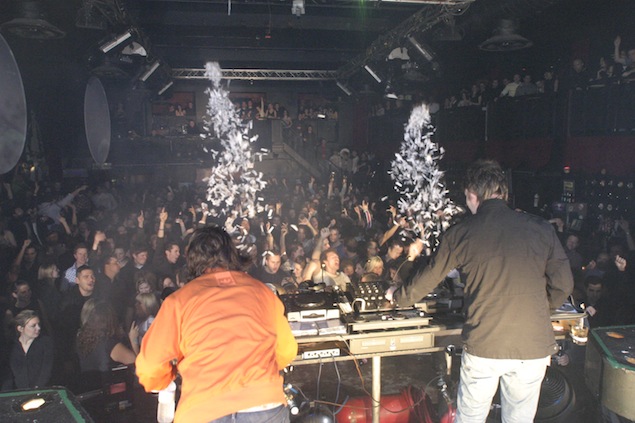
Guy and Holmes DJ the opening night of the Mod Club Theatre, November 2002. Photo by Trevor Roberts.
The birth of the Mod Club Theatre: In early 2002, Revival was closed for two weeks because of a liquor-licence infraction.
“We took our scheduled shows across the street, to Corner Pocket,” says Revival’s Saturnino of the pool hall that operated out of 722 College at the time. “Dom and I showed Bruno Sinopoli how to transform his place into a club.”
“It had been a club, and before that it had been some kind of theatre, with the stage and everything,” says Holmes of the space. “I walked around upstairs and thought it was amazing, like in that scene from Quadrophenia when the guy jumped off the balcony into the crowd. It was a beautiful place, but just so gross inside at the time.”
The Mod Club nights would go on to pack both venues on Saturdays for years, with DJs and dancers darting back-and-forth across the street from Corner Pocket to Revival.
Early into their run at both venues, Holmes was inspired.
“I got to thinking that the reason people were going to Lava on Wednesdays and Saturdays at Revival was for Mod Club so I said, ‘What would it be like if I had a place that is The Mod Club? What would it take?’
“A little while later, I made a deal with [Corner Pocket owner] Bruno, put all my money in, and designed the whole place on my laptop. I gave that to the builders, and we built The Mod Club Theatre. People were worried that it would be such a gamble, but I felt I had to keep moving forward.”
The Mod Club Theatre officially opened doors in November 2002. Bobbi Guy recalls a fave moment from the first night.
“[British-Canadian world heavyweight boxing champion] Lennox Lewis had been invited, and came with his entourage of large humans. I knew he was a West Ham United fan so we started talking about some old faces we both knew back in London. We ended up singing West Ham songs arm in arm, much to the bemusement of his troops.”
Why it’s important: “I think, mainly, we gave club-goers a different option from what was happening elsewhere in the city,” says Guy, a main Saturday resident DJ until early 2010. “People were weary of going to the club district for a good night out. We were in a lot safer area, but were just as deadly on the dancefloor. College Street was a quiet place till we showed up; now look at it.
As for the venue itself, Mod Club Theatre brought a professional 700-capacity club and concert space to College Street.
“It raised the bar for sound and lighting,” states Holmes. “I wanted a place where you could see bands in a beautiful surrounding, with fantastic lights and sound, and where you could sit down without getting chewing gum stuck to the seat of your trousers.”
Early on, films such as 2001: A Space Odyssey screened, but Mod Club Saturdays remained the main draw. Fridays were initially launched as glam night Velvet Goldmine, with Joan Jett flown in to guest DJ at the opening. Crystal Castles’ Ethan Kath was a Friday resident DJ, back in the days when he still answered to “Claudio.”
Holmes also worked to establish Mod Club Theatre as a concert spot, reaching out to event producers including Against The Grain (now Collective Concerts). After Muse performed at the club on a Saturday in April 2004, concert bookings poured in. Area restaurants, like neighbours Il Gatto Nero, benefited from the business.
Above all, Mod Club Theatre is highly versatile as a venue.
“Mod Club is fantastic from a technical perspective, with amazing sound, production, and sight lines,” says Adam Gill, founder of event production company Embrace. “It’s an amazing live/concert room, but also works great for DJ/electronic-type events.”
“The first time I went to Mod Club Theatre was on a Saturday,” recalls DJ/producer and A.D/D Events co-founder Mario Jukica. “Mark really blew me away with the level of production he was doing, creating an exciting atmosphere that relied heavily on the use of video technology and pyrotechnics.
“I was impressed as it felt a bit like a concert. The tech team, led by Mark Prinsloo, had the ability to set the stage for a live band and tear down within minutes, then set up a DJ platform centre stage. This gave me a lot of ideas, and made me really want to work with them.”
It’s this very versatility—and group of people—that made Mod Club Theatre one of the global hubs for the merger of rock and electro.
From 2003 to 2007, Holmes a.k.a. DJ MRK, programmed and played the highly rated Mod Club radio show, broadcast live on 102.1 The Edge, Thursdays from 11 p.m. to 2 a.m. Guy also introduced three new tracks each week.
“That’s when the music scene really changed,” says Holmes; “It’s when the whole indie band mixed with electronic music idea moved forward. Necessity is the mother of invention. We were – Bobbi especially – very much in contact with a lot of British DJs who would send him stuff. I had an idea to bring the indie crowd and the dance crowd in to the same place, and I worked on that with quite a few people. That’s how the radio show got started. Then A.D/D came in after that and started solidifying that whole vibe. Then the whole scene exploded.
“Obviously that happened all over the world, but when I think back to the radio shows, we had to make our own music. We bootlegged indie tracks and mixed them with electronic music. It was great because people at The Edge started getting requests for songs they’d never heard of and never playlisted. I had control of the music for the live-to-air because I was the DJ. It was like witnessing the birth of a new scene.”
Toronto’s Crystal Castles and MSTRKRFT both formed during this time period, and both played the live-to-air with Holmes.
“That’s how I reconnected with Mark,” says Keeler, the Mod Club-at-Revival resident DJ who’d become half of MSTRKRFT. “I found out he was playing and championing music from both MSTRKRFT and Death From Above. At one point, he asked if I wanted to DJ the live-to-air. I pulled no punches that night. It was MSTRKRFT, and we played the same way we would have in England or anywhere else in the world at the time.”
“Mark took a lot of chances with the music he played through such a commercial medium as 102.1,” confirms Jukica. “Hearing artists like LCD Soundsystem and Mylo on the radio was refreshing. It definitely helped expose the music we were championing at our parties.”
By late 2004, Jukica and Eve Fiorillo were producing parties under the banner of A.D/D at Mod Club Theatre. They booked local DJs including Barbi and Rory Them Finest, and presented themed events like Return To New York, with Arthur Baker, and I Love Neon, with guests including Tiga. A.D/D also had tight ties with influential French electronic label Ed Banger, presenting many of their artists, including at the infamous Daft Punk afterparty of August 2007.
“That was, for sure, our highlight at that venue,” says Jukica, who also DJs as Milano. “Seeing them at the party unmasked until the bitter end, when the club was empty, was special. All the Ed Banger related events had an incredible energy level.”
A.D/D would later take their bookings and colourful, post-raver crowd to CiRCA for their Randomland Fridays, but when that concluded in summer 2009, Adam Gill and Embrace stepped in to fill the void by presenting the musically related Arcade Fridays at Mod Club Theatre.
Over Arcade’s two-plus-years, Embrace highlighted locals like Milano, Meech, Poupon, Gingy and Bordello, Andy Ares, St. Mandrew, DJ Medley and Auto Erotique while also presenting weekly international guests. That impressive roster of names includes Simian Mobile Disco, Claude Von Stroke, Zedd, Laidback Luke, Rusko, Toddla T, and Trentemoller, who presented a most incredible live band show in April 2011.
“Arcade had a great run, and there were so many good nights, but Benga was a special one,” recalls Gill. “It was when dubstep was still a very new and fresh sound, and was a very cool night of music. Wolfgang Gartner was insane; the place went absolutely nuts for him. Fake Blood on our one-year anniversary might have been the best night there though. People went crazy.”
Keeler—who has DJed Mod Club multiple times as part of MSTRKRFT—has another favourite from the venue’s Friday night history.
“I really liked when Vitalic played there live—both times, but the first one was really special. The crowd was really receptive for someone like Vitalic, who doesn’t fit in a box real easy. He’s not a pop guy by any means, but it was just rammed. For a while, Fridays had such a dedicated crowd that seemed to really enjoy a big spectrum. The first time I saw Torro Torro play was there, and I was super impressed.”
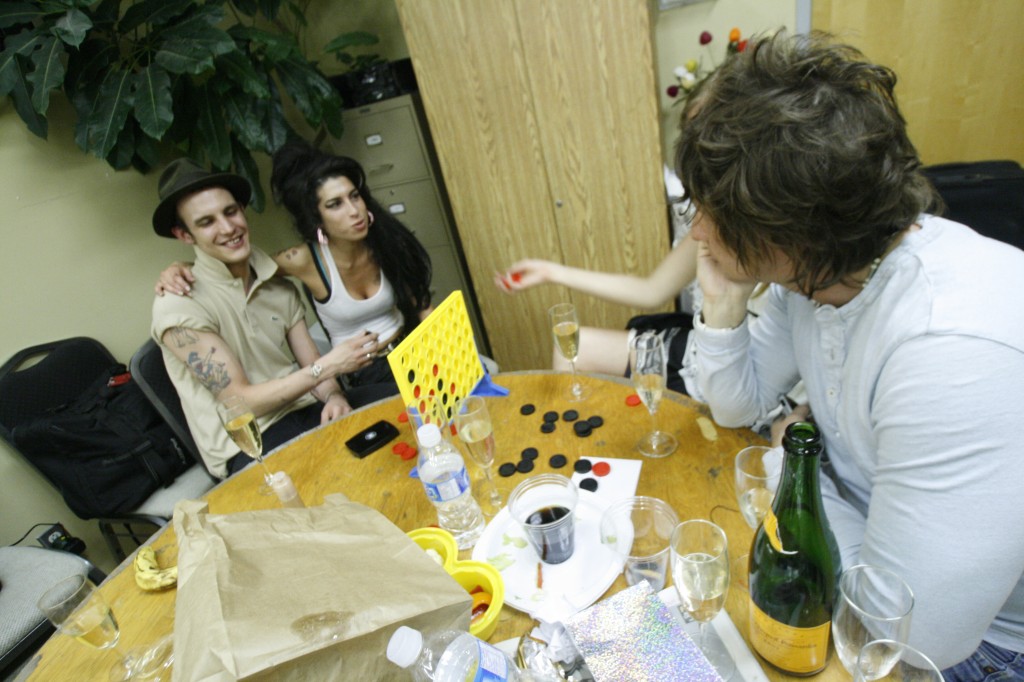
Amy Winehouse (centre) with husband Blake Fielder-Civil and Mark Holmes, backstage in 2007. Photo by Trevor Roberts.
Who else has played/worked there: “Mod Club Theatre was the Cadillac of gigs on the College strip, and it was the best-sounding room to play, too—in no small part due to Mark Prinsloo and his good ears,” says Dan Kurtz. “The first New Deal and Dragonette shows there felt like big deals.”
The New Deal, in fact, staged their high profile 2009 CD release show at the club, and Dragonette has chosen to perform there multiple times.
“I feel that with Dragonette in particular, we kind of became legit at our shows at the Mod Club Theatre, at least as performers. We liked how we sounded, and how our shows looked. It felt, I suppose, big.
“It was also the first place I ever DJed at, which was terrifying, but we [Kurtz and Dragonette drummer Joel Stouffer] drank our entire rider before we started, so we felt pretty awesome about 15 seconds into it. I also saw a Feist show there that I just loved. It was a perfect venue for her intimate style of performance.”
The list of artists who’ve performed at Mod Club Theatre is both impressive and enormous. For electronic music fans, live shows by both Booka Shade and Modeselektor are highly memorable. Amy Winehouse performed two heartrending sold-out shows in May of 2007. K’naan launched his Troubadour CD there in 2009, while The Weeknd made its live debut on the same stage in 2011. And, of course, dozens of British acts of all musical stripes—from Paul Weller to Kaiser Chiefs to Mike Skinner—have headlined.
Embrace, Collective Concerts, Live Nation, and other concert promoters continue to book in shows, making Mod Club’s listings ones to watch.
And when it comes to staff, longtime manager Jorge Dias is another frequently credited principal player; he, Prinsloo, and Bruno Sinopoli were also the key figures behind the transformation of the Queen Elizabeth Theatre.
“The Mod Club staff is amazing,” Jukica summarizes. “They buzzed really hard on the nights of our shows, and were a major reason for the electric vibe in the room.”
The here & now: The venue now technically known as Virgin Mobile Mod Club, thanks to a 2011 sponsorship deal, celebrates a decade in business this weekend. Many credit the club’s success largely to Holmes.
“Mark has vision, and he succeeds at doing things right,” says Bottrell, who continues to happily operate Supermarket. “He has an artist’s eye for detail, and he sure is bang-on with wanting the best in lighting, sound, and visuals.”
“There’s not a lot of spaces that are made that intelligently, or places where people care that much about sound—despite what they might tell you,” agrees Keeler, who spoke while on a break from working on a new Death From Above 1979 album that’s nearing completion. “Everything I’ve ever seen at Mod Club has sounded great. I’m always impressed by that.”
As for Saturnino, he appreciates the ties between his venue and Mod Club.
“Both places have different identities,” he says, pointing to Revival’s blend of burlesque, bands, and soul and house-heavy sounds.
“Having another [sizable] club has given people more choices, and helped make our entire area better for business.”
“That such a residential neighbourhood, with small neighbourhood shops, could also have such a first-class venue, with world-class artists playing there on a weekly basis, makes that part of Toronto truly fantastic,” concurs Kurtz.
Mod Club’s 10th anniversary party this Saturday (Nov. 17) features guests including Dr. Draw and DJ Jelo, alongside current U.K. Underground Saturday residents MRK and Tigerblood. The Saturday sounds may have changed over the years, but the song remains the same.
“The Mod Club means ‘modernist’ and to be a modernist, one must embrace the future, embrace technology, and search for and present the new all the time,” says Holmes, now also busy with the recently reformed Platinum Blonde.
“The times change, and the scenes change. We still spin some Britpop tracks and the crowd loves them, but it’s 10 years later, and it’s different music. Now it’s other kids’ time to make their history, their time capsule.”
Thank you to Adam Gill, Bobbi Guy, Dan Kurtz, Greg Bottrell, Jesse Keeler, Joe Saturnino, Mario Jukica and Mark Holmes.

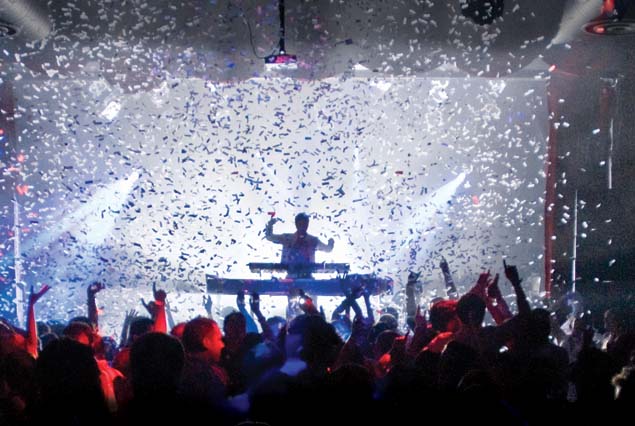
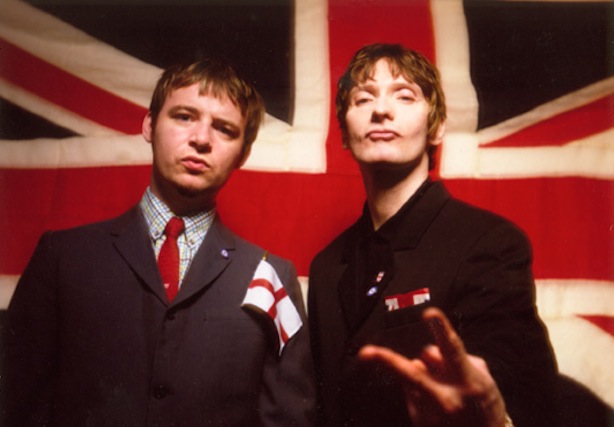
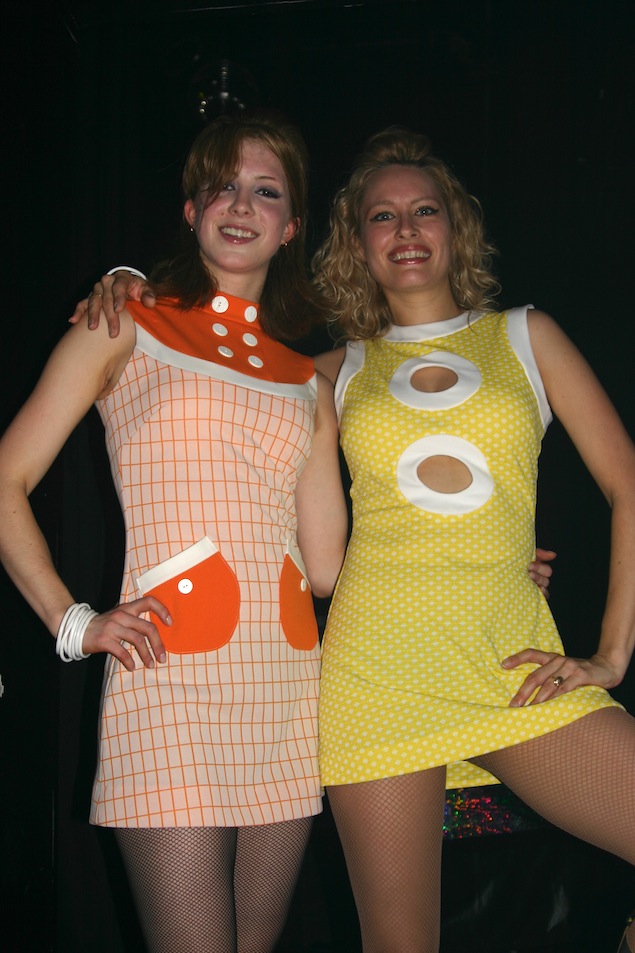
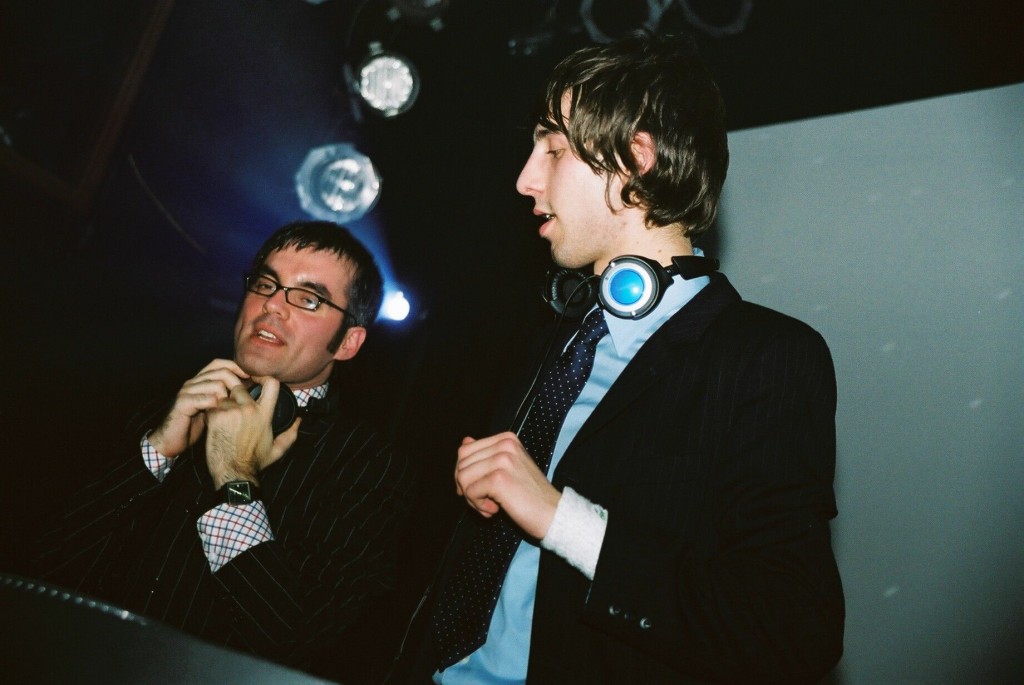
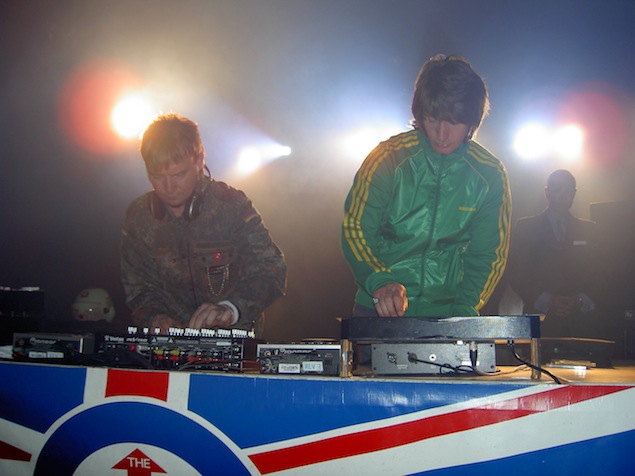
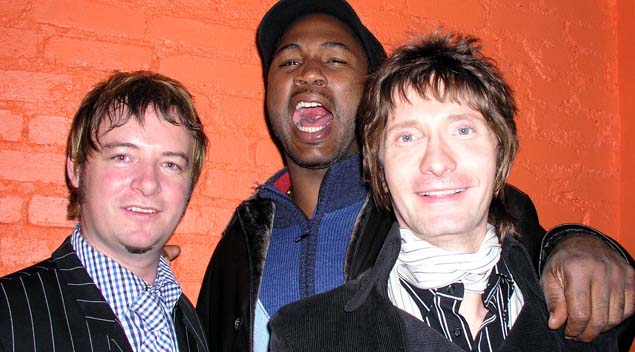
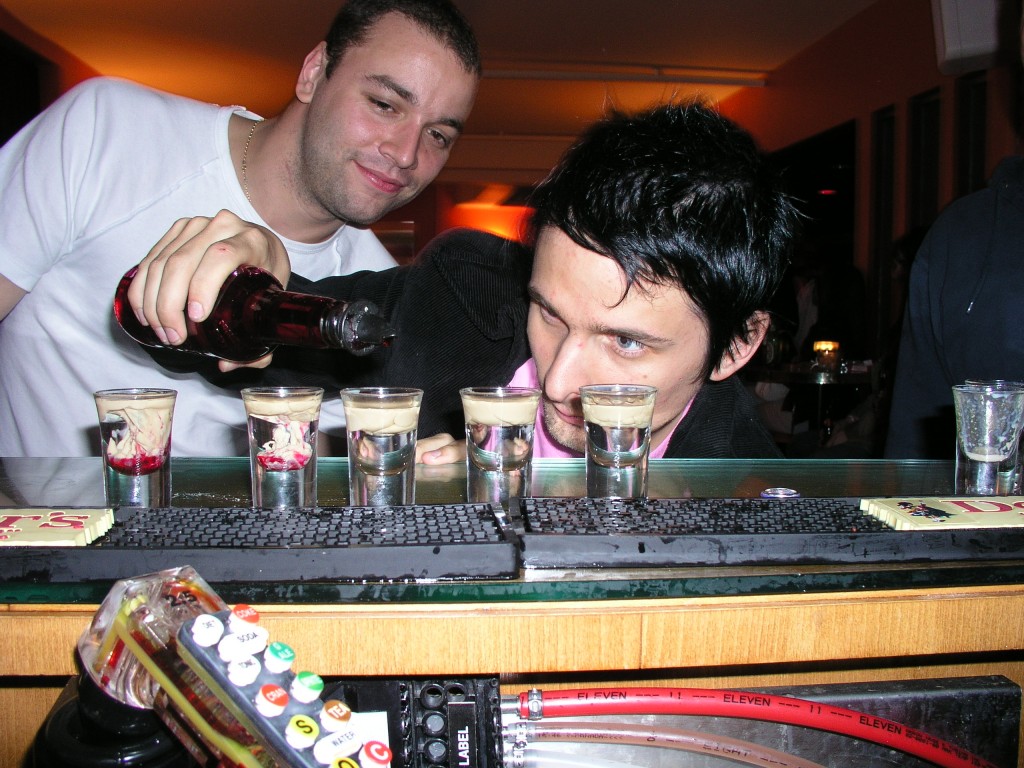
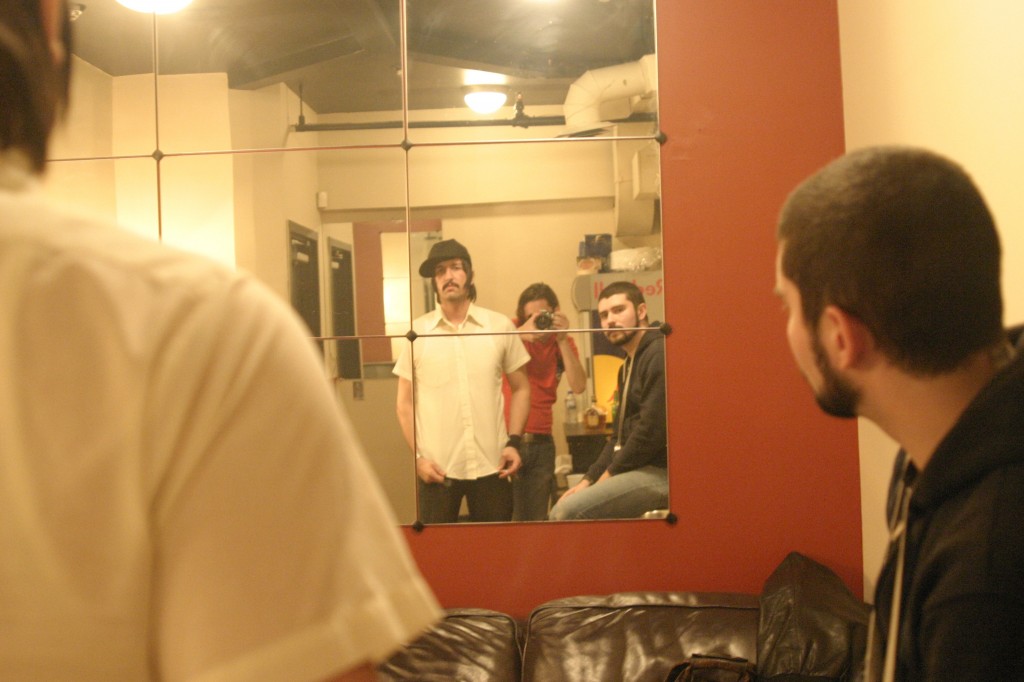
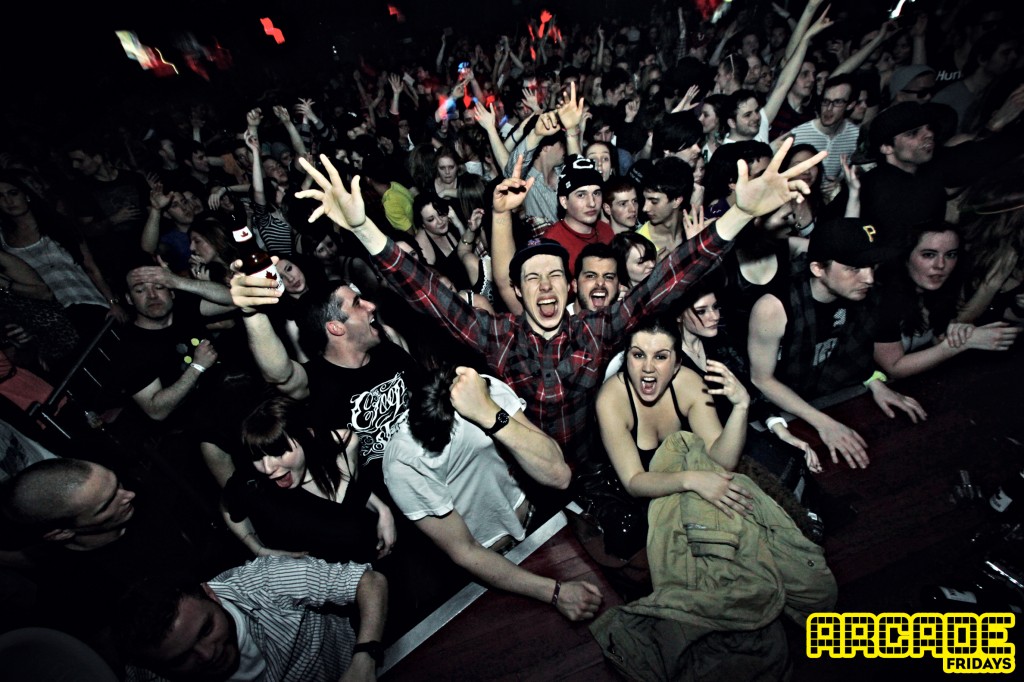
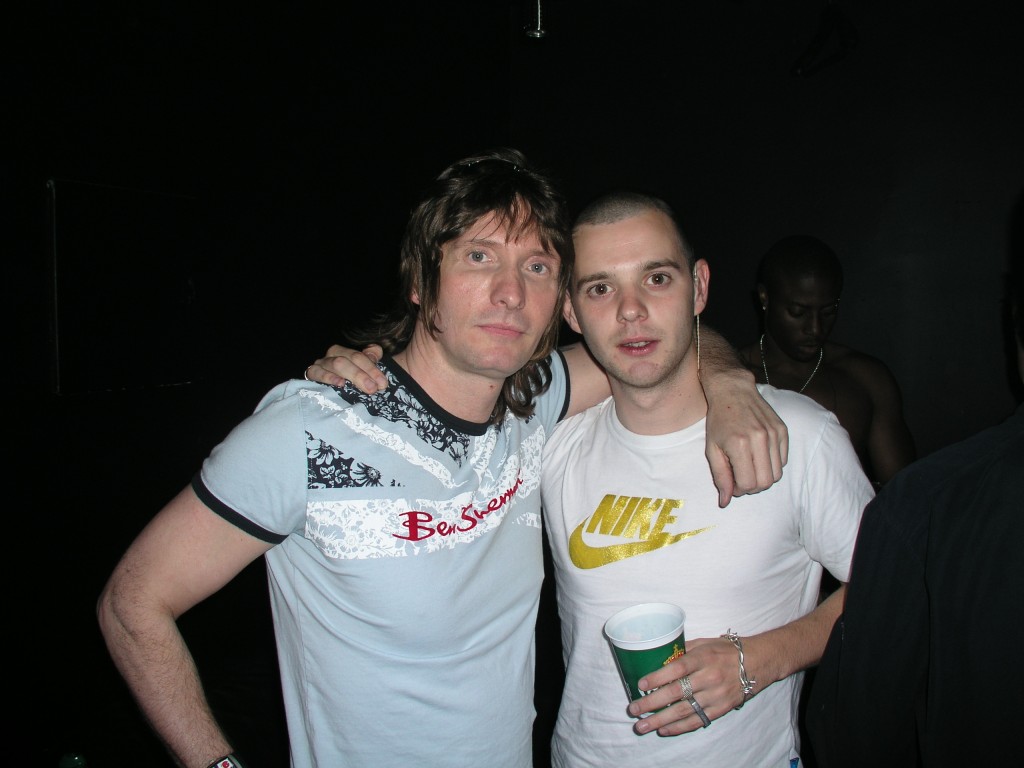
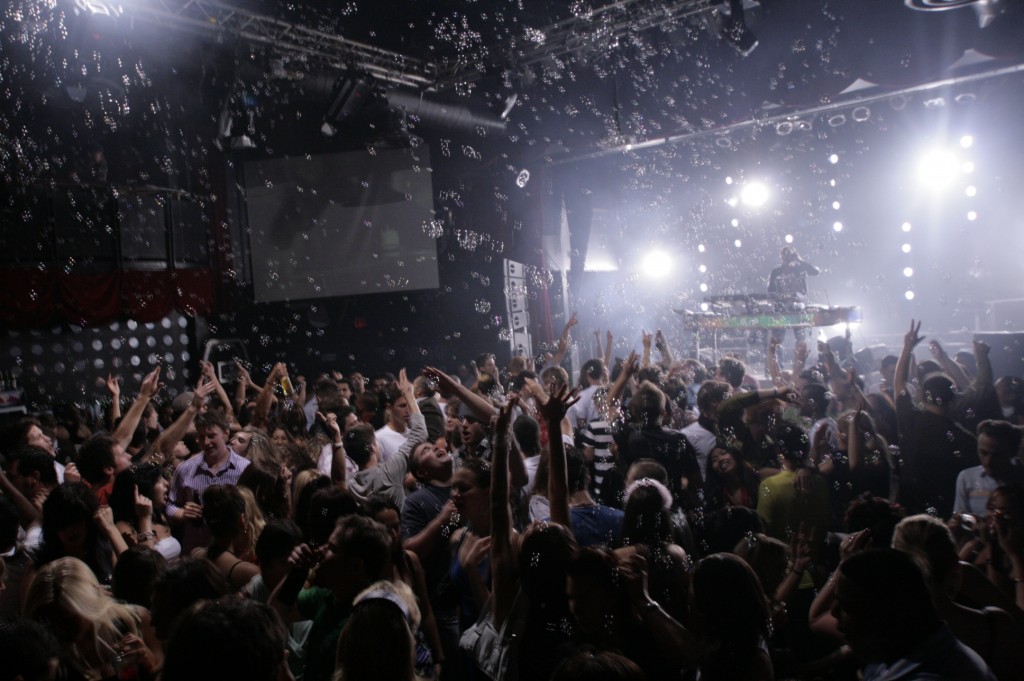
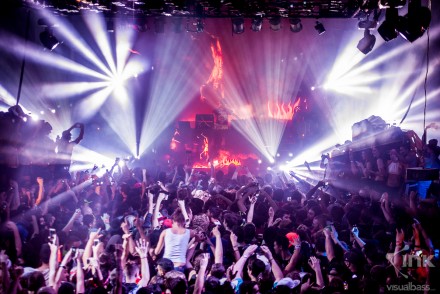
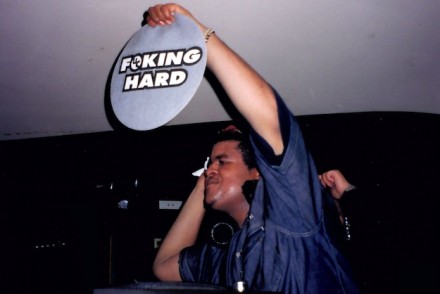
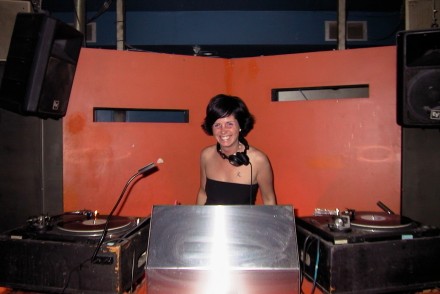

4 Comments
Any idea and photos of Gino Vannelli playing there? Thanks
Funny at the failure to mention and have pictures of Mod Clubs Most Popular DJ Rude Boy Bob hmmm
I used to live on Beatrice, and damn near every weekend was spent at the MOD. Living so close was an honor as I could stumble home for an afterparty!
I still have solid memories, what I can remember anyway, of the countdown from Italian Job on the big screens and then bubbles and confetti being sprayed everywhere to Blur’s Song 2.
It signaled the time to get wild and crazy and enjoy the rest of the night on the dancefloor at the MOD will all the other cool looking kids.
And now I’m reminiscing even more by listening to Platinum Blonde’s Alien Shores Album at work. Sick album Mark.
All comments in the string below have been republished from their original appearance on The Grid website. We’re including the readers’ comments as they add to these Then & Now stories. We look forward to reading new comments here as well.
Celeste
That one picture Mark doesn’t seem to be too terribly impressed with Amy or Blake. 2:02 am on February 26, 2014
Janzer
I’ve always loved Mod Club. I think it’s a fantastic venue for shows, one of the best in the city for that size, if not, the best at that size. And those old club nights were amazing! I had a spectacular time every weekend. It was our go to spot. I’ve seen the rise and fall of many great clubs in this city and it’s nice to see Mod Club sticking around. I wish I knew it was the 10th anniversary party this weekend. I would have gone. In fact, maybe it’s time a revisited sooner rather than later. Another great article Denise!!! 8:05 pm on November 19, 2012
Anonymous
Great article but i think Bobbi deserves more credit/respect than is being shown Go Hammers 12:00 pm on November 17, 2012
Niina
This article brought me back in time and I can truely say it was a magical time in my life. 9:46 pm on November 16, 2012
laura
a great article guys. I’ve got loads of great memories ant many of those listed venues. Has it really been 10 years…yikes! 5:02 pm on November 16, 2012